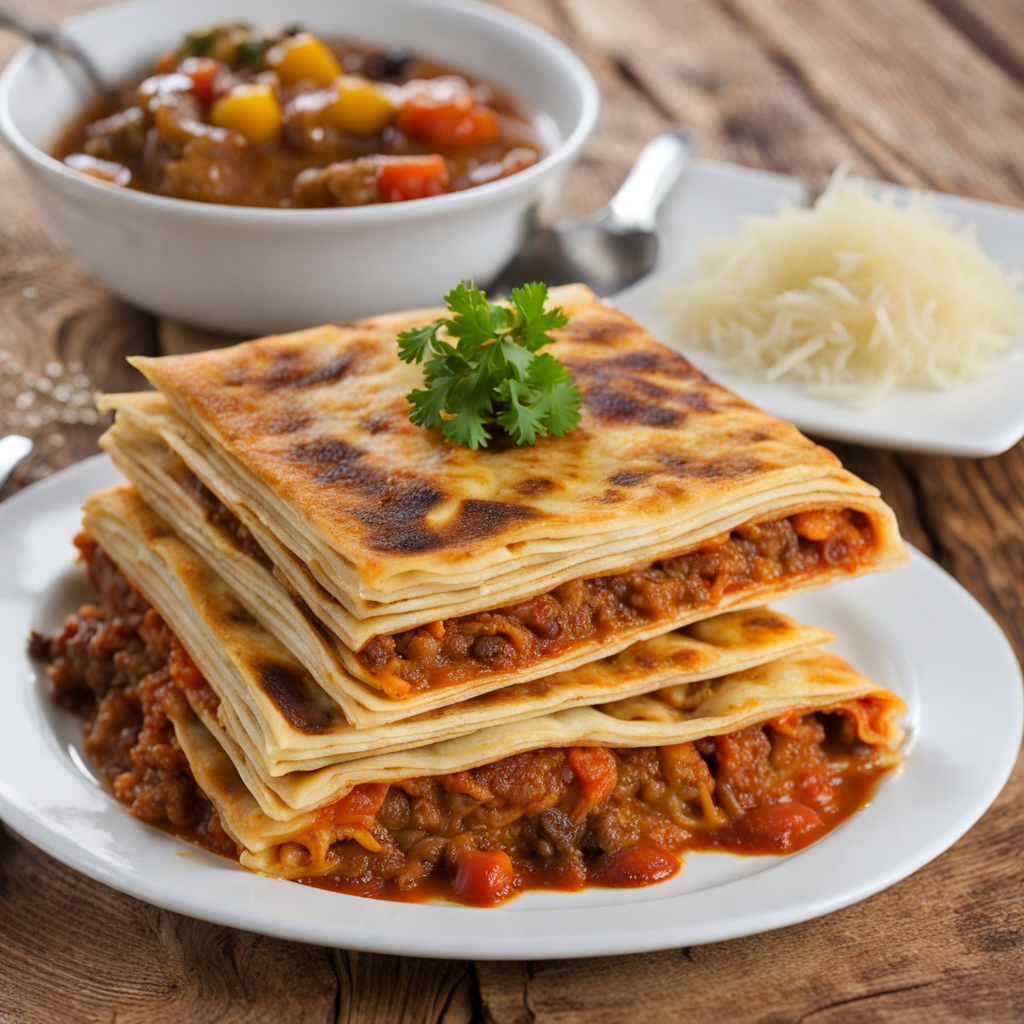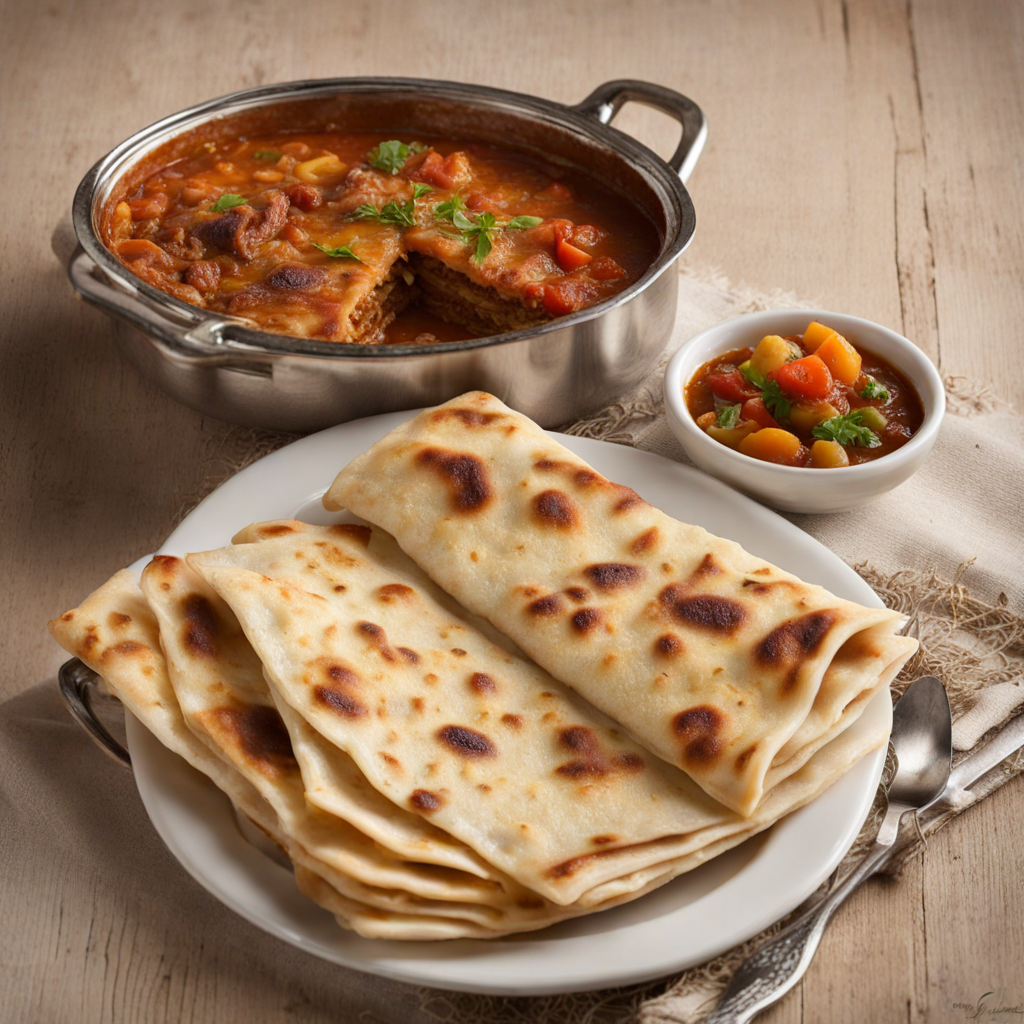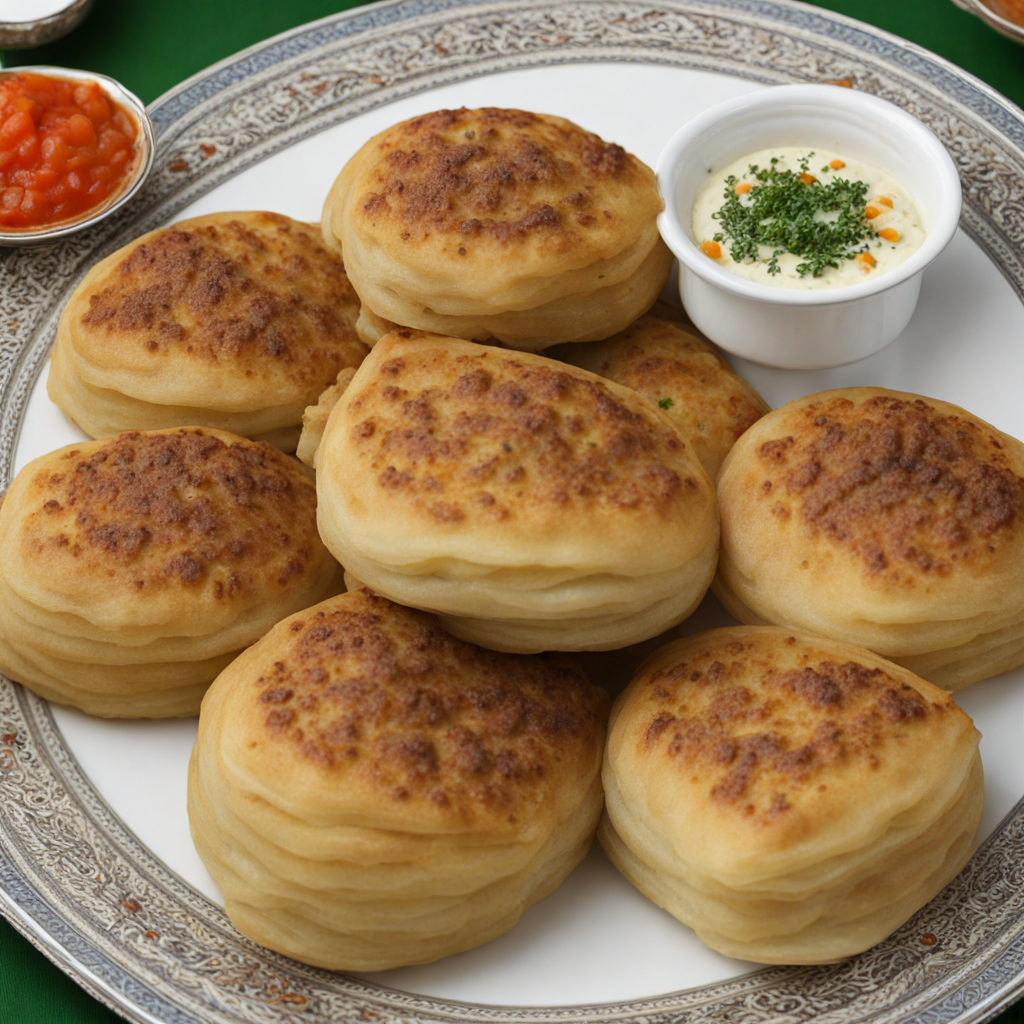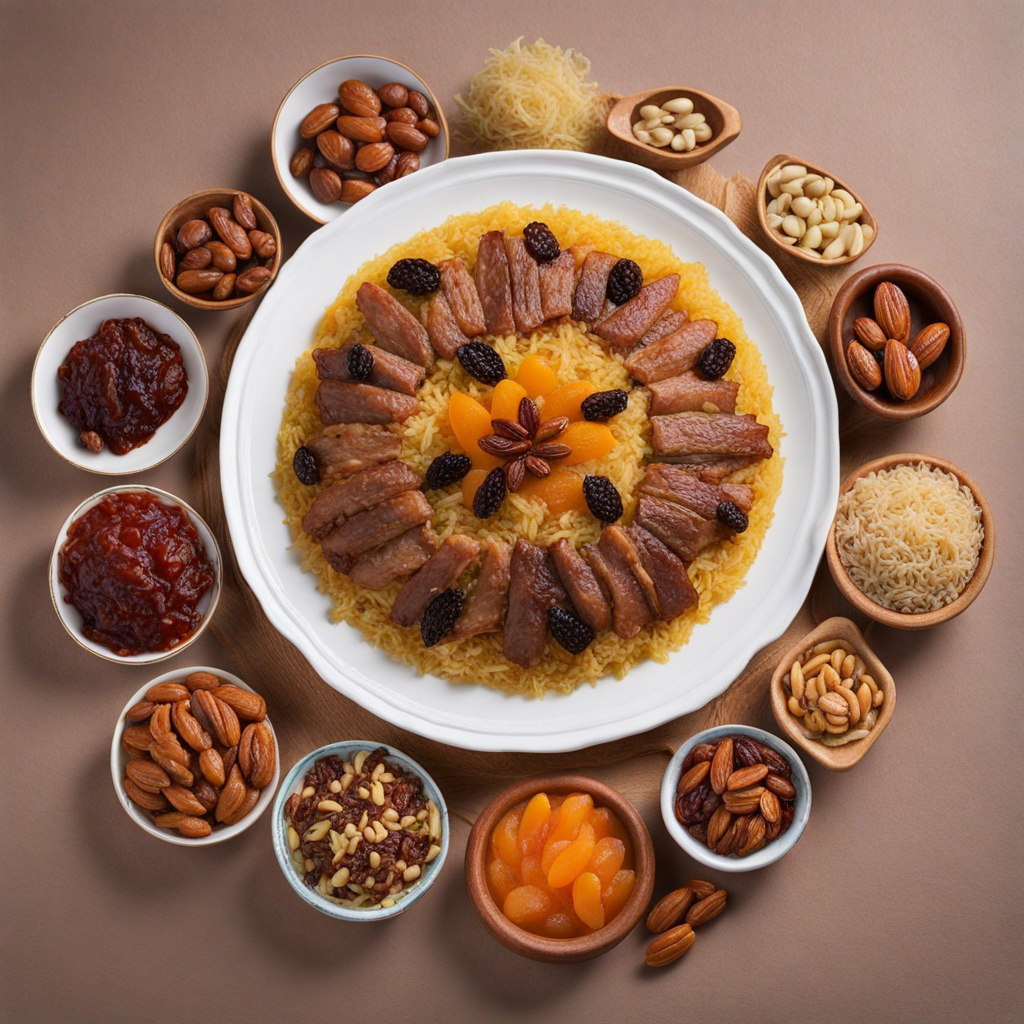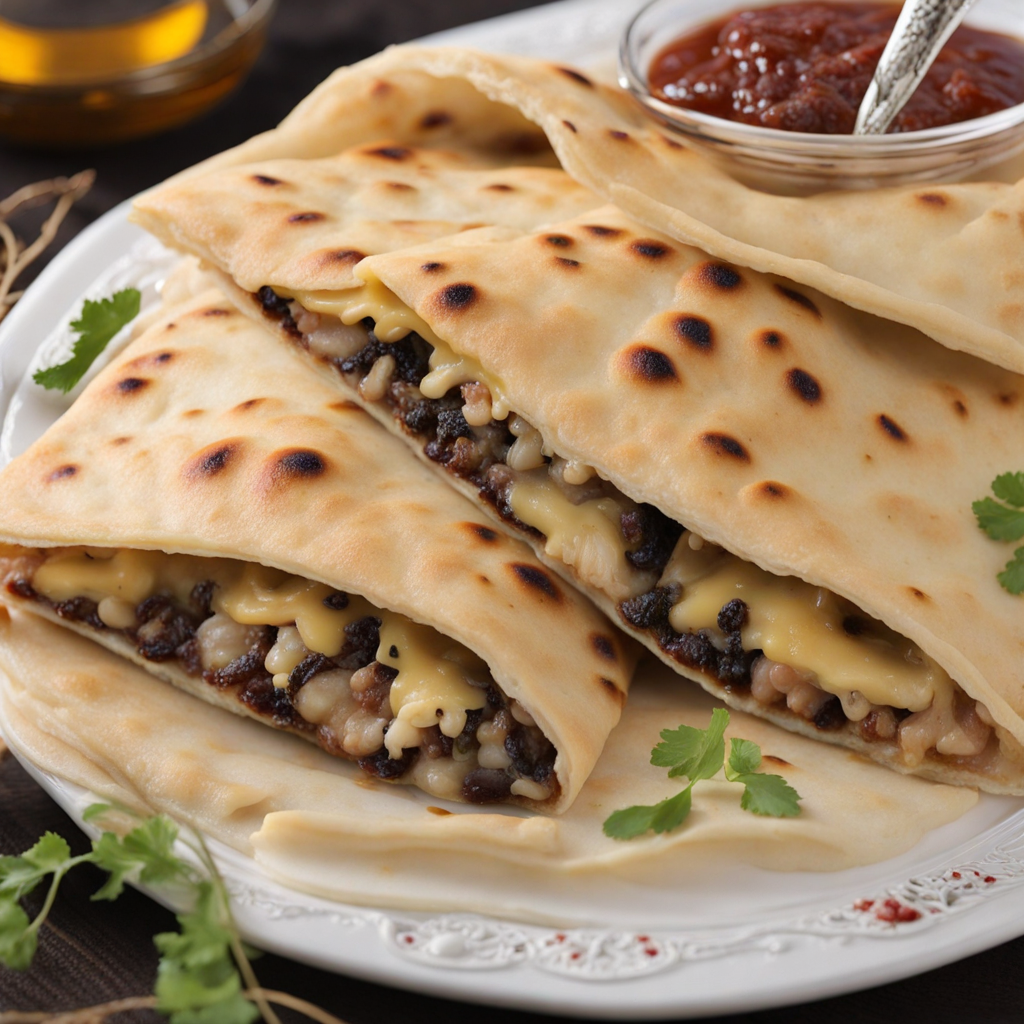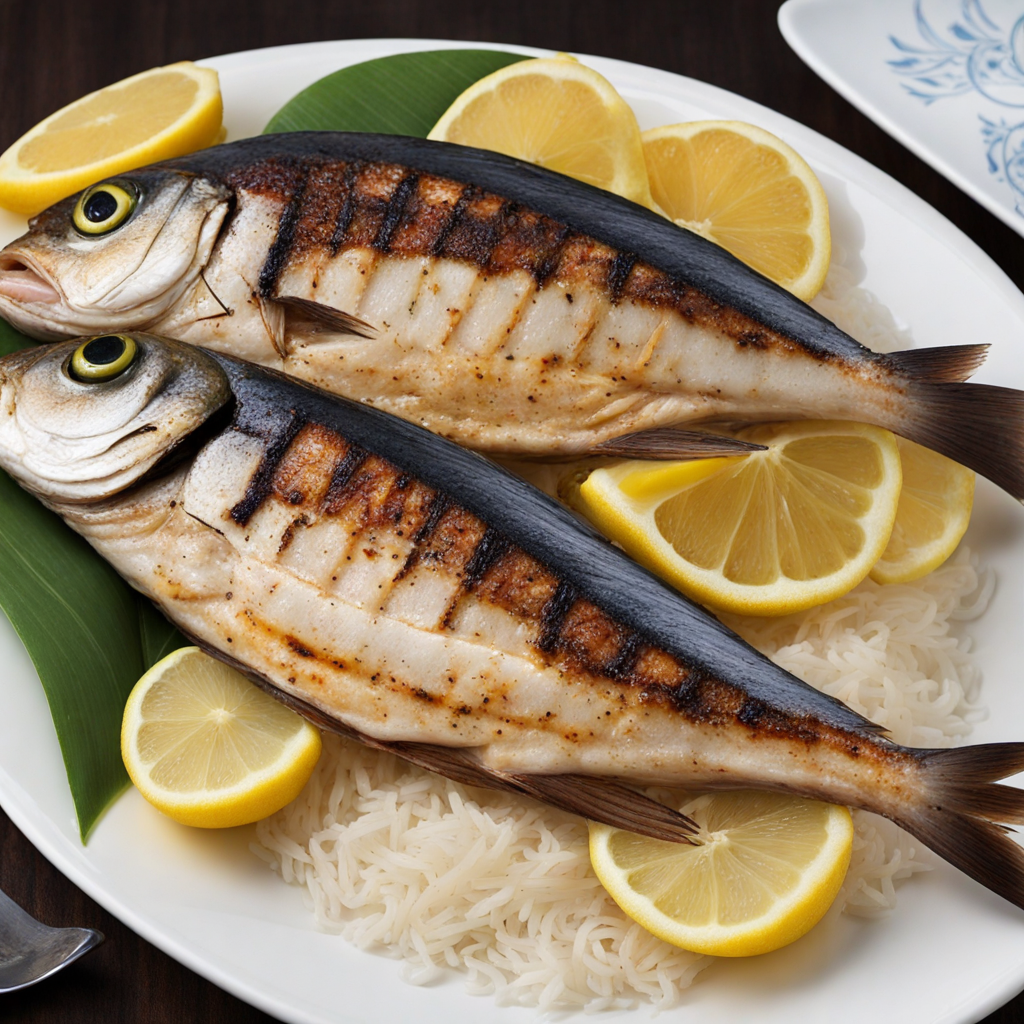Thareed
Thareed is a traditional Omani dish that beautifully marries the rich flavors of tender meat with the wholesome goodness of bread. At its core, Thareed consists of a slow-cooked stew, typically made with lamb or chicken, simmered in a fragrant blend of spices such as cumin, coriander, and turmeric. The dish is known for its comforting texture, as the meat becomes fall-apart tender, absorbing the aromatic broth that is both savory and slightly sweet. The broth is often enriched with vegetables like potatoes and carrots, creating a hearty meal that is both satisfying and nourishing. What sets Thareed apart is its unique method of serving. The stew is ladled over a bed of khubz, a traditional Omani flatbread, which soaks up the flavorful juices, transforming the bread into a delectable accompaniment. This combination creates a delightful contrast of textures, with the soft, pillowy bread perfectly complementing the rich, meaty stew. The dish is often garnished with fresh herbs such as coriander or mint, adding a fresh note that balances the richness of the meal. Thareed is not just a meal; it’s a culinary experience that embodies the spirit of Omani hospitality. It is commonly enjoyed during family gatherings and special occasions, where sharing this dish brings loved ones together. Each bite offers a taste of Oman's cultural heritage, showcasing the importance of communal dining and the joy of savoring bold flavors. As you explore Thareed, you will discover a delicious blend of tradition and warmth that makes it a must-try for anyone seeking to expand their palate.
How It Became This Dish
The History of ثريد (Thareed) in Oman #### Origins of Thareed Thareed, a traditional dish of the Arabian Peninsula, has its roots deeply embedded in the rich tapestry of Omani culture and history. This dish, primarily made with layers of bread soaked in a flavorful broth, typically features meat and spices, offering a comforting and communal dining experience. While its exact origins are difficult to pinpoint, Thareed is believed to have been enjoyed by Bedouin tribes for centuries, serving as a nourishing meal amidst the harsh desert environment. Historically, the dish is thought to have been influenced by ancient practices of bread-making and cooking with broth, which were common throughout the Middle East. In Oman, the use of flatbreads—such as khubz—dates back to the pre-Islamic era. The incorporation of bread into stews and soups reflects a resourceful approach to utilizing available ingredients, particularly among nomadic communities who relied on staple grains and livestock. The word "Thareed" itself is derived from the Arabic verb "ثرد," which means "to crumble" or "to shred." This is reflective of the dish's preparation method, where bread is torn into pieces and layered with meat and broth, creating a harmonious blend of flavors and textures. #### Cultural Significance Thareed is not just a meal; it is a symbol of hospitality and communal bonds in Omani culture. In Oman, sharing food is an essential part of social interactions, and Thareed holds a special place during festive occasions, family gatherings, and important celebrations. Its preparation often involves the participation of multiple generations, fostering a sense of togetherness and cultural continuity. One of the most significant times for consuming Thareed is during Ramadan, the holy month of fasting. After a day of fasting, families gather to break their fast with a hearty meal, and Thareed is often a centerpiece. This dish embodies the spirit of sharing and generosity, as it is typically served in large platters that encourage communal eating. The act of tearing the bread and mixing it with the broth symbolizes unity, as everyone comes together to enjoy the meal. Thareed also features prominently in Omani weddings and other significant celebrations. Its presence at these events signifies abundance and joy, making it a dish of honor. In these contexts, Thareed often includes more elaborate variations, showcasing the cook's skills and the family's hospitality. #### Ingredients and Preparation The ingredients used in Thareed can vary widely, reflecting regional preferences and available resources. The base usually consists of flatbread, commonly made from wheat flour, which is either baked in a traditional clay oven or on a griddle. The bread is often stale or dried, allowing it to absorb the broth without becoming overly soggy. The broth typically includes a mix of spices, such as cumin, coriander, turmeric, and occasionally saffron, which imbue the dish with warmth and depth of flavor. Meat is a key component, with lamb or chicken being the most common choices. The meat is simmered until tender, allowing the flavors to meld beautifully. Vegetables, such as potatoes, carrots, and onions, may also be added, enhancing the nutritional value and texture of the dish. The preparation of Thareed is a labor of love, often involving slow cooking and attention to detail. The bread is torn into pieces and placed in a large serving dish, followed by the hot broth and meat. The dish is then left to rest, allowing the bread to soak up the rich flavors before serving. #### Evolution Over Time As Oman has evolved through the centuries, so too has Thareed. The dish has adapted to incorporate new ingredients and cooking methods, reflecting the influences of trade, migration, and cultural exchange. The influx of spices and culinary techniques from other regions has enriched Omani cuisine, allowing Thareed to develop into various regional interpretations. In modern times, Thareed retains its traditional essence while also embracing contemporary culinary trends. Some chefs experiment with different types of bread, such as multigrain or flavored varieties, to create unique spins on this classic dish. Additionally, health-conscious adaptations have emerged, using leaner cuts of meat or incorporating more vegetables to cater to changing dietary preferences. Despite these modern adaptations, the core values associated with Thareed remain intact. It is still celebrated as a dish that fosters community, tradition, and shared experiences. Many families continue to pass down their recipes and cooking techniques through generations, ensuring that the cultural significance of Thareed endures. #### Thareed in the Global Context In recent years, there has been a growing interest in Middle Eastern cuisine on a global scale, and Thareed has found its way into the hearts and kitchens of food enthusiasts outside Oman. As culinary tourism grows, visitors to Oman often seek out authentic experiences, and Thareed has become a highlight for those looking to understand the local culture through its food. Omani expatriates have also played a role in promoting Thareed abroad, often preparing the dish for gatherings within their communities, thus keeping the tradition alive in foreign lands. This globalization of Thareed serves as a testament to its enduring appeal and the universal desire for comfort food that brings people together. #### Conclusion Thareed is more than just a dish; it is a reflection of Oman's rich cultural heritage, steeped in history and communal values. From its humble origins as a sustenance for nomadic tribes to its status as a symbol of hospitality and celebration, Thareed continues to evolve while remaining deeply connected to its roots. As it adapts to modern tastes and global influences, the essence of Thareed as a dish that unites people across generations and cultures endures. Whether enjoyed in a bustling Omani household or a trendy restaurant abroad, Thareed remains a cherished culinary treasure, embodying the spirit of sharing and togetherness that defines Omani culture.
You may like
Discover local flavors from Oman


